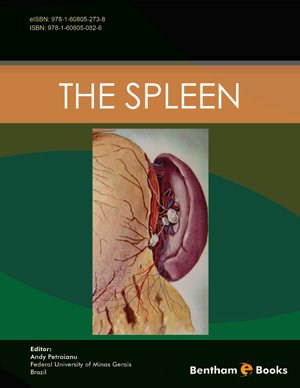Abstract
As benign, non-traumatic, splenic diseases are extremely rare, the practicing surgeon very occasionally deals with patients suffering from such conditions. A number of these diseases, such as congenital splenic cyst, may present themselves with mild symptomatology, thereby creating diagnostic uncertainty. Others however, such as hydatid cyst, when unprofessionally managed, may still be dangerous and even prove lethal. Therefore, the diagnosis and management of benign non-traumatic splenic diseases remain a challenge for the clinician. Benign splenic diseases, which are discussed in this chapter, include non-parasitic cysts (primary or true and secondary or false cysts), inflammatory cystic masses (hydatid cyst, bacterial and fungal abscesses), benign vascular neoplasms (haemangioma, littoral cell angioma, lymphangioma and hamartoma), benign vascular pathology (splenic infarction, splenic artery and vein aneurysm, intrasplenic pseudoaneurysm, splenic arteriovenous fistula and splenic vein thrombosis), and other benign disorders such as inflammatory pseudotumour of the spleen, splenic peliosis, Gandy- Gamna’s bodies and ectopic or wandering spleen. Their signs and symptoms are vague, non-specific and often confusing, delaying and often making diagnosis difficult. Clinical findings and blood analysis are often of little help. Sonography, computed tomography and magnetic resonance imaging are the most valuable imaging techniques. Besides being a therapeutic procedure, surgery may be indicated when the diagnosis is in doubt. While splenectomy was the treatment of choice for a long period of time, during the last decades, more conservative management has been advocated for benign non-traumatic splenic disorders after the recognition of the significant function of the spleen. Additionally, improvement in available equipment and an increasing experience of interventional radiologists under emergent conditions has led to increased application of endovascular techniques in the treatment of diseases of the splenic vessels and subsequent preservation of splenic function.






















